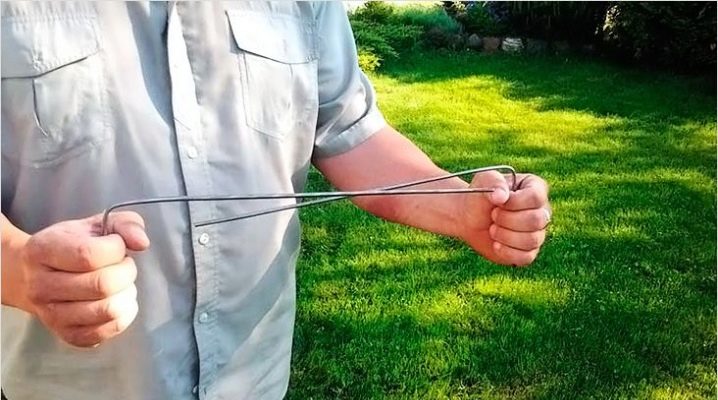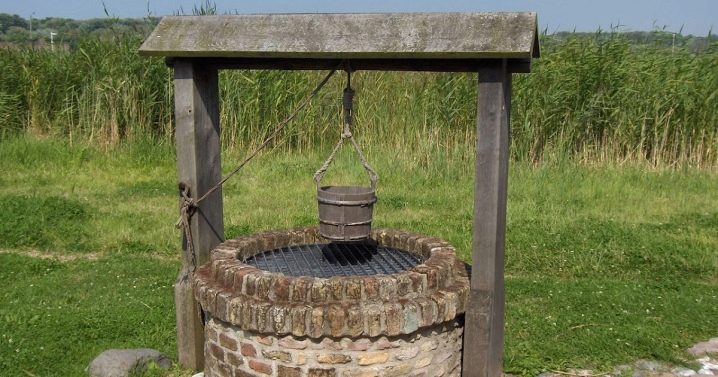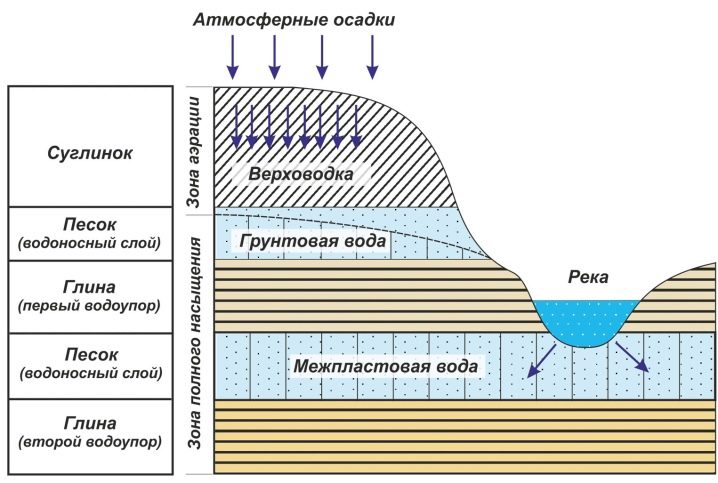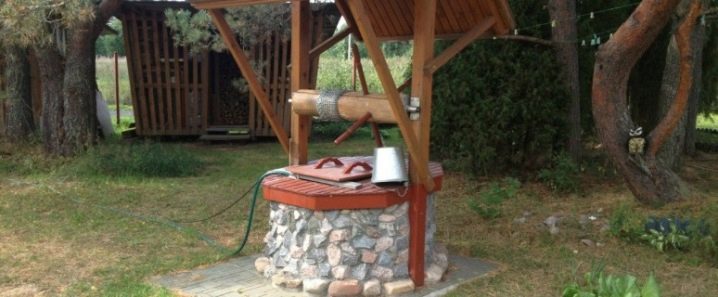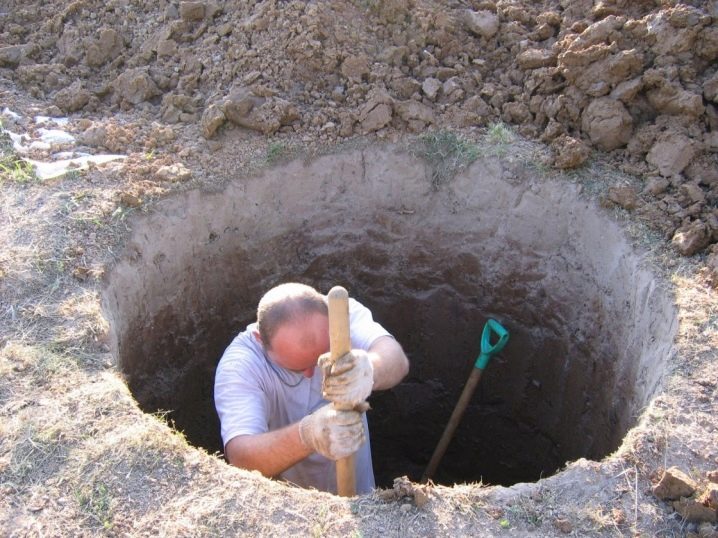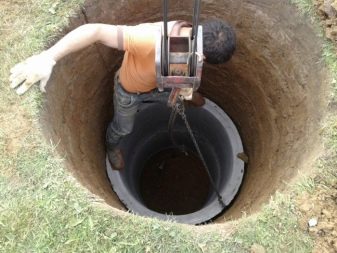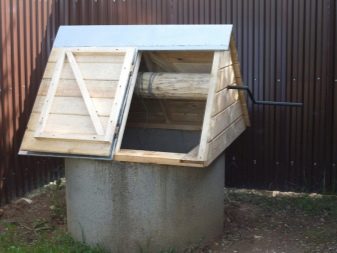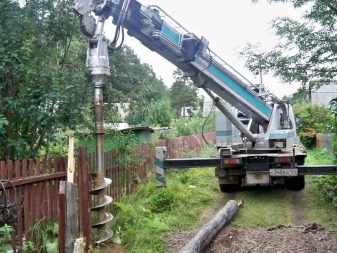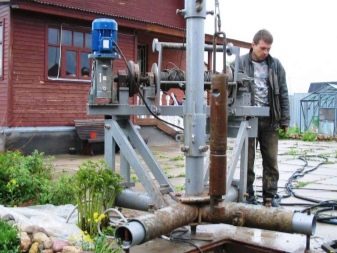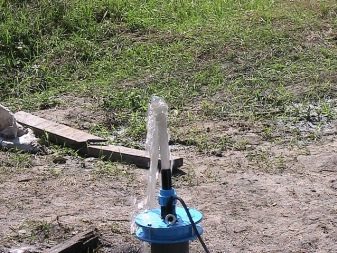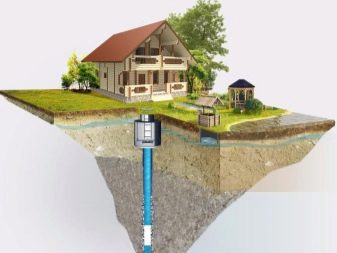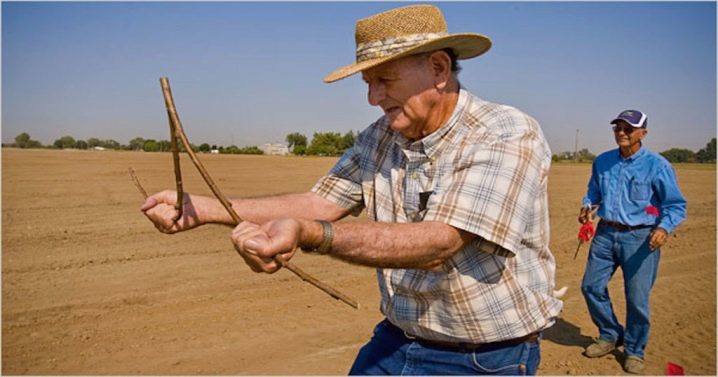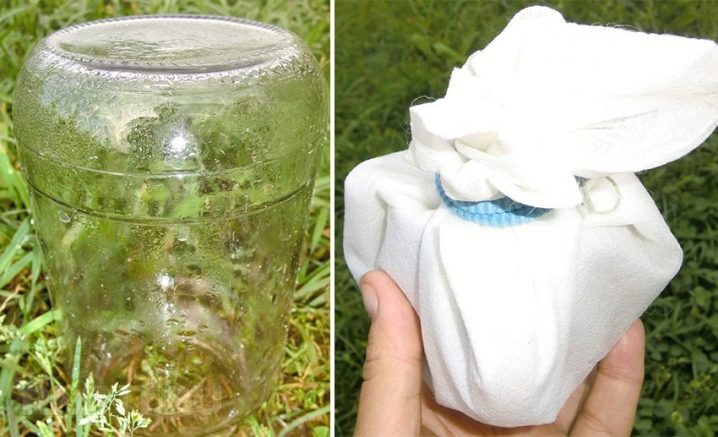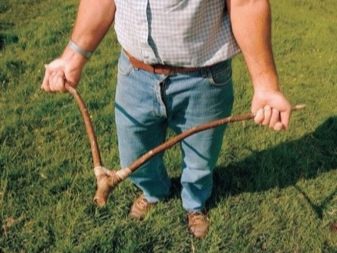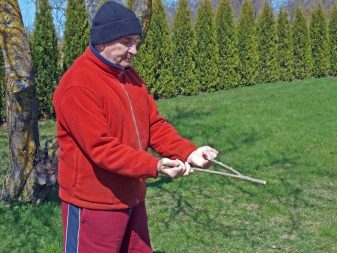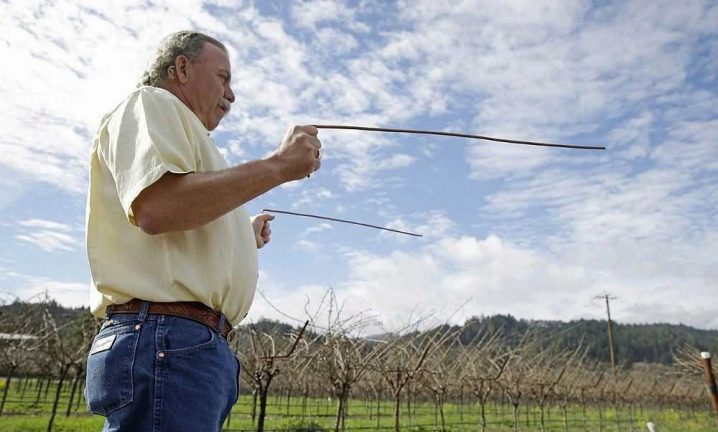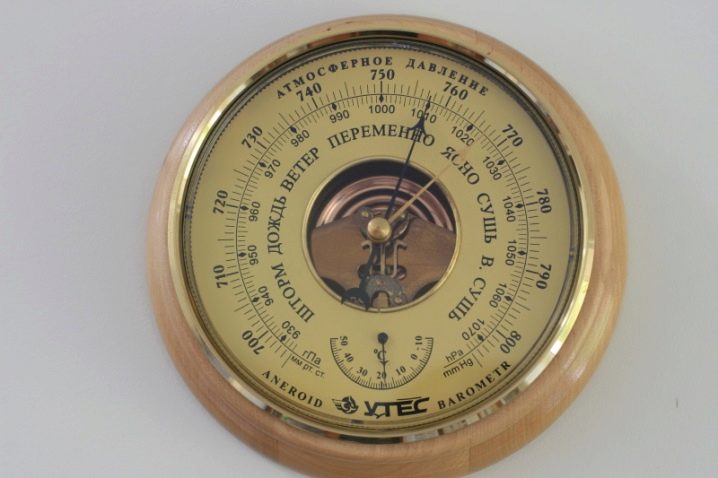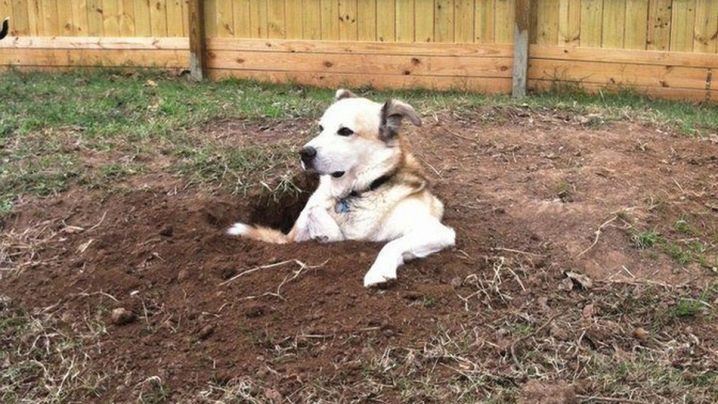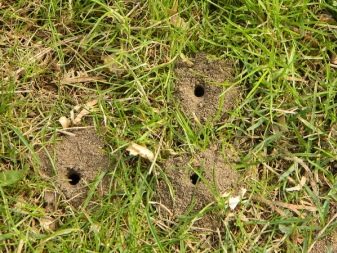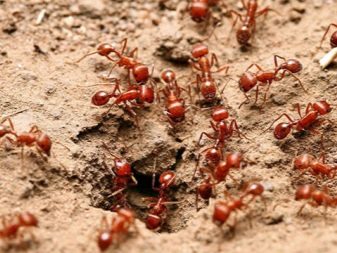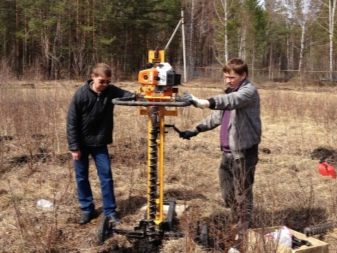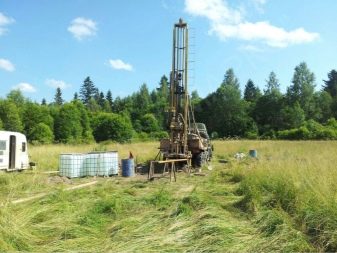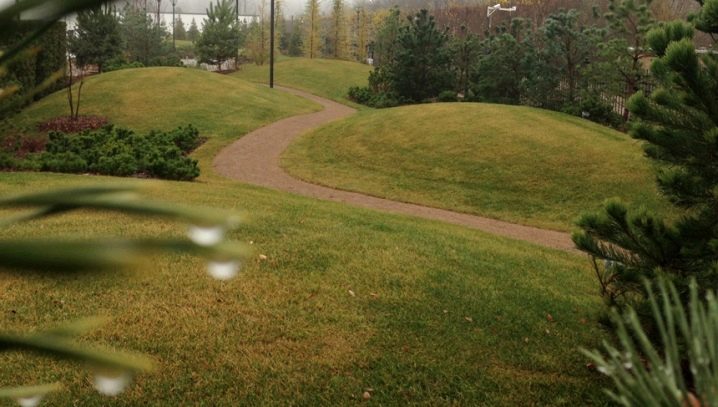How to find water on the site for the well?
Owners of private houses and suburban areas have a valuable opportunity to take water from a natural source, well or well, and not from the water supply. We have been aware of the benefits of pure natural water since childhood. In addition, water intake is simply necessary for watering crops and ornamental plants in the garden. The article will discuss how to find water on your site for a well or a well.
Varieties of groundwater
First you need to figure out what kind of water is in the layers of the earth and how it differs. Groundwater types are distinguished primarily by the depth of their occurrence.
- Surface water (top water). The depth of occurrence is on average from 1 to 5 meters. Due to the shallow depth of this water is not cleaned sufficiently, therefore unsuitable for drinking. Verkhovka used for technical needs or irrigation of the crop on the site.The main source of these waters is precipitation, so the amount of moisture and water in the surface layers is very dependent on weather conditions. During a prolonged drought, the surface water layer can be significantly depleted.
- Groundwater. Lay down below the surface, at a depth of 5 to 40 meters. This water layer is located mainly between sedimentary rocks, so it is much less dependent on the amount of precipitation and temperature changes. Due to this, in the hot season there is no significant depletion of the water supply.
- Artesian water. This type has a greater depth of occurrence. Often artesian water can be found at a depth of 100 meters. However, in some cases there is a need to significantly deepen the well, up to 1 thousand meters. These waters are well cleaned, because before they accumulate at depth, they are naturally filtered by many layers of soil. Numerous analyzes and examinations showed the presence of a large amount of mineral substances in such water. Artesian wells have pressure.
- Interstitial waters. Lay between two waterproof layers, for example, between layers of clay.Are suitable for drinking. The interstratal waters are cleaner than the groundwater, but the well or well should be quite deep.
Types of water intakes
Depending on the required volumes of use or consumption, various types of water sources can be built on the site. But also the choice will depend on the depth at which water was found.
Copanka
The easiest and most accessible source for the construction is the usual digging. He is a natural capacity for collecting surface water. A pit is dug in the ground, the walls of which are not protected by anything, and if necessary, the bottom is lined with polyethylene or other waterproof material.
If at the bottom of the dimple there is a layer of clay, you can do without lining.
The principle of operation of this "water tank" is very simple. Surface water (if available on the territory) naturally seeps through the walls of the excavated pit and accumulates at the bottom. In this way, you can easily extract water for irrigation. In addition, any summer resident can make such a source with his own hands, using only one shovel.
The disadvantage will be only that the degree of filling with water will strongly depend on weather conditions. And in the case of a prolonged drought, the surface waters run dry altogether.
Well
Much more difficult in terms of construction is a well. Under the most favorable conditions, the depth of such structures can be from 3 to 5 meters. But even the excavation of a shallow well requires the use of technology. In some cases, the groundwater lies quite deep, you have to dig to a depth of over 30 meters.
The walls of the well are reinforced with concrete rings to avoid shedding of the soil.
If water is abstracted manually, a wooden box with a crane or with a round bobbin for winding the chain is installed on the surface of the well. A more convenient option is to install a stationary pump and extract water by pumping out.
Well
For the extraction of water at great depths drilled wells. It is advisable if high-purity water with mineral properties is needed. Drilling a well in the area also has to be resorted to in the absence of water in the upper layers of the soil.
The process requires a special drill rig. Before the start of drilling, hydrological exploration is carried out to determine the exact location. Well drilling is very expensive.
Search for locations of waters
Next will be described several of the most popular methods for determining the location of groundwater. There are more than a dozen of them, but not all of them are available and feasible on their own.
There are several basic techniques and methods for locating water reserves.
Vegetation
Take a close look at the vegetation that is in the area. The following types of plants and shrubs are likely to speak about the presence of a fairly abundant amount of surface and shallow groundwater: lingonberries, blackberries, bird cherry, buckthorn, bearberry, wild rosemary.
But also very moisture-loving birch. Powerful, healthy and well-developed birch on the site indicates sufficient moisture of the soil layers within a radius of 5-7 meters from the tree.
Neighbors
Feel free to consult with the owners of neighboring sites. Ask them about how and in what quantities they produce water, how clean it is and whether it is suitable for drinking. And also you can learn about the depth of wells and boreholes.
Empty cans method
Several cans are digging into the ground with the neck down. The depth of digging is about 5 cm. The more cans are dug in, the more territory can be checked for the presence of groundwater. It is recommended to dig in cans at a distance of about 50 cm from each other.
Inverted containers must be left overnight. During this time, a certain amount of moisture will fall on the inner walls of the vessels. Most rich in groundwater is the place where the bank was found with the greatest amount of liquid and moisture on the walls.
Biolocation method
Despite the fact that it was used by our ancestors, it refers to unconventional. Although its reliability is large enough.
In the old days, a sprig of vines was used for this method of searching for water. Curved at an angle close to a straight line, the branch was held in a hand parallel to the surface of the earth. In this position, the searcher passed through the site. In those places where the underground waters were lying, the vine began to spontaneously turn in her hand.
Later it was noticed that aluminum has similar sensitivity properties. By analogy with a branch of a vine, an aluminum thin rod bends at a right angle and is lightly clamped in a fist with a short end. In a place where the device starts to turn from side to side, there are water reserves.
Fog watching
The thickest and lowest fog is formed over areas with abundant groundwater.
Measuring the difference in atmospheric pressure using a barometer
It is necessary to measure the atmospheric pressure above the surface of any nearby reservoir and remember the result. Then, the pressure level at the place of digging of the well or drilling of the well is measured. The difference between the atmospheric pressure above the surface of the reservoir and the pressure indicators in the territory of the site will indicate the depth of the waters in a particular location.
For example, above water, the pressure indicator was 750 mm, and in the area of 749.5 mm. Subtract from a larger figure and get 0.5 mm. Next, we calculate the depth at the rate of 1 mm is 10-12 m. Consequently, in our case 0.5 mm will be equal to 5-6 meters.
Moisture absorbing materials
You can use different materials that absorb water: salt, silica gel or broken brick will do. The selected substance is well dried in the sun or in a preheated oven to remove moisture from it. Then it should be placed in a fabric bag and weighed.
Bags with moisture-absorbing material should be buried about a meter in the estimated locations of the waters. A day later, the bags need to dig and weigh.For several hours the adsorbents will actively absorb moisture from the soil, thereby gaining weight. The bag, which is most added in its mass, will indicate the place where the water reserves are in large quantities.
Animals
But it can also provide some help in finding water on the site pets. On very hot summer days, dogs sometimes try to dig up the ground with their paws in places where they feel the closest fit of moisture.
Chickens, on the other hand, prefer to lay eggs in dry places. If a chicken coop or a nest is built on soil with a high content of groundwater, chickens can persist to rush anywhere, just not there. Not knowing this peculiarity, some farmers are perplexed for a long time and cannot find the reason for such behavior.
Small flies in the evening before sunset accumulate over places with high humidity.
If the soil is pitted with mouse holes, then this place is very dry. Mice avoid areas with deposits of water and high humidity.
Red ants, although an unpleasant phenomenon on the site, can give a hint about groundwater.They never build their anthills on wet soils.
Exploratory drilling
This method is quite expensive, but 100% accurate. For exploration drilling a small borehole is made. With its help, the composition of the soil, the depth of the first layer of water is studied. And it is also possible to take water samples for analysis.
This method shows the feasibility of costly drilling of a production constant well, as well as digging a well at a specific location.
All described methods are designed for use in the warm season and are unsuitable for the search for water deposits in the winter under the snow.
Problem areas
When looking for a place for a well or a well, it is necessary to know in advance the zones and conditions unfavorable to water intake.
Groundwater reserves are usually very small:
- in areas with mountainous and hilly terrain;
- in areas located on the side of a steep bank of rivers or lakes;
- near extensive water intakes;
- in the quarry area;
- near artesian springs;
- in areas where beech and acacia grow in large numbers.
Water can be of poor quality or contain harmful substances:
- on swampy areas (including those subjected to drainage);
- near places of mass walking of cattle, dumps;
- in waste disposal sites;
- near rivers on the low bank side;
- next to agricultural fields (due to the possible use of chemicals for crop processing);
- near cemeteries and cattle cemeteries.
You should not make a well near the trees, even if the analysis showed a large amount of groundwater in this particular place.
First, you harm the root system of a tree, since the roots of adult trees diverge not only deep into the soil directly under the tree, but also several meters in diameter.
Secondly, the root system of trees is constantly evolving and growing in different directions, and this will eventually destroy the walls of the well and lead to its clogging.
But also it is not necessary to plan the drilling of a well under the power line. Equipment for drilling is designed for deep immersion in the soil, therefore, has the appropriate dimensions. The proximity of the electric wires will make the work not only difficult, but also dangerous.
A well or a well with drinking water should be located at least 15 meters from waste tanks, a compost heap or a septic tank.
For information on how to find water on a well site, see the following video.
